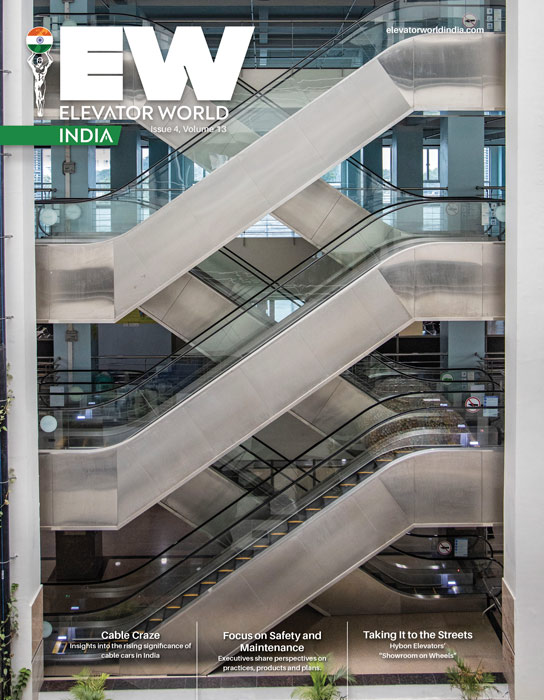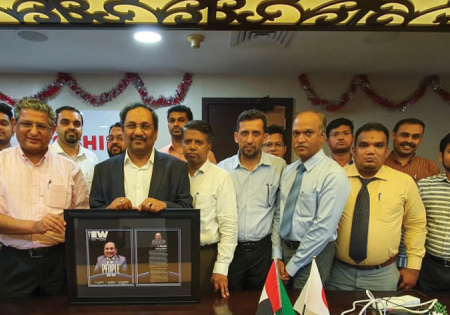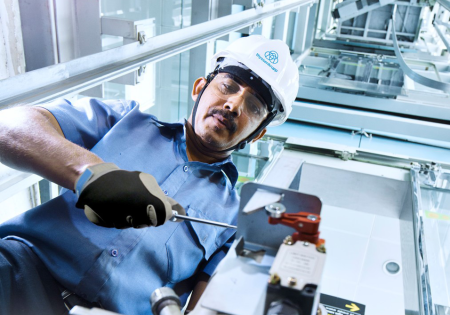Analyzing the factors that influence the safety and maintenance aspects of VT with feedback from end users
The need for ensuring safety and maintenance with respect to vertical transportation (VT) has frequently come up during discussions over the years. Myriad challenges faced while managing these aspects during the COVID-19 pandemic highlighted the importance of leveraging technology, including the Internet of Things. The efforts of maintenance teams have been highly praised, as well.
However, several unfortunate incidents related to elevator usage have also made headlines. In one high-profile case, the mishap occurred while the victim was distracted by an ongoing phone call while entering the elevator and fell into the shaft. Then, there were instances of people attempting to exit an elevator when it was stuck between floors or, worse, boarding an elevator from the basement despite that level being flooded due to heavy rains. From maids and security staff to members of the business community, these were casualties involving people from every strata of society.
Certain housing societies have opted for a cheaper maintenance provider. This resulted in frequent breakdowns and recurring problems. This shortsighted approach ultimately made residents of the higher floors suffer.
What emerged from these incidents is that end users clearly need to be more vigilant and follow the rules mentioned inside elevators in case of emergencies. Societies also need to ensure that maintenance contracts (along with the accompanying benefits) with reputed elevator brands continue. Similarly, representatives from the VT industry have strongly emphasized that elevator purchase decisions should not be taken solely on the basis of the lowest price, as this results in all types of compromises when it comes to safety, performance and sustainability. Elevator installations that do not comply with directives and rules need to be stopped, as this can, by itself, resolve a lot of these accidents.

Commenting on the situation, Nitin Lalge, senior software developer, FutureBridge, says:
“Most of the lift accidents I read in recent news were about the people entering an empty shaft. Technical glitches and negligence in maintenance of elevators are among the major issues. But, as individuals, we are too casual while pressing the button to call the elevator. Such mishaps can be avoided if we stay alert. During monsoons, sometimes lifts at lower levels get flooded, and people still choose to travel in them, despite chances of getting stuck and power failures being high. One should always be aware and alert while using elevators.”
According to Lalge, signage is useful only when people read it, so it must be placed in a noticeable location. He adds:
“Also, safety drills are being conducted in commercial premises for the people operating the lifts. Such awareness sessions should also be initiated and conducted in residential and commercial spaces for end users. Lifts in affordable housing or slum rehabilitation buildings need extra attention, but in those places, maintenance and keeping lifts in safe condition are considered unnecessary expenditures. So, stricter measures need to be taken by the government, and fines should be imposed on people who fail to ensure safety.”

Jaywant Rane, team leader, CMS Infosys Pvt. Ltd., concurs:
“Lift safety and maintenance is highly neglected, especially in residential societies. Even while buying a home, a layperson is concerned about location, amenities and other aspects, but lifts are rarely considered important. Cities with growing high rises need good elevators for regular transportation. Power backup for elevators is another aspect that needs attention from members of the society to bring stricter measures when it comes to elevators. Elevators make our lives easy but, if not maintained properly, can lead to dangerous situations. Awareness is important; there is no need to depend on the government to do everything. Rather than feeling sorry after an incident occurs, taking initiative is the need of the hour.”
Rane opines that, in addition to maintaining elevators, modernizing elevators is also important, from a safety point of view:
“Newer technology gives efficient and reliable results. We still find sliding grille doors in an era of automatic doors; this has got to change. Allocating a fixed person near an elevator will help mitigate incidents that occur due to negligence. Also, getting the required maintenance done from a registered and established manufacturer is important and advisable [versus getting] it from an unknown company to save money. Every residential society spends a hefty amount on festivals, entertainment and other cultural activities. So, is it so difficult to contribute sufficient funds, apart from the regular maintenance, to keep the elevators in a better and safer condition?”

Shruti Jadhav, who works with a multinational corporation, points out that, in this modern world, we cannot imagine or overlook the invention of elevators:
“One cannot ignore the practical problems of accessing the top floors of any building over eight or 10 floors without an elevator. The wide use of elevators not only changed the skyline, but also has a significant socioeconomic impact. The creation of tall buildings made it possible for cities to develop; a larger number of people and families can live in a single building. There are many cities like Mumbai, Delhi, NYC, Shanghai and Mexico City [with more than] 10 million inhabitants each.”
Jadhav also points out that, before elevators were widely used, the upper floors of buildings that had to be reached via stairs were avoided, and it was difficult to find buyers. In skyscrapers, the higher floors are preferred by the affluent class, as the street noise is minimized, there is ample sunlight, and there are far better views. She feels it is all due to the increased use of elevators that top floors of buildings are the most desirable accommodation today, adding:
“Elevators definitely make life easier for senior citizens and the differently abled. . . . Elevators have given them the opportunity to travel independently and safely between building floors, which would not have been possible otherwise. Also, other variants in VT like escalators, [moving walks] and chairlifts have made their movement in public places like temples, leisure spots [and] malls much easier. With the increasing use of home elevators, their mobility within their homes has also become much easier.”
However, Jadhav also cautions that, perhaps, people have begun to take elevators for granted:
“Elevators have had a significant impact on the modern world. But, today, when we travel in elevators, we do not give much [thought] to the fact that they have made our lives comfortable by increasing accessibility. The only time we pay attention to elevators is when either their door remains open for too long, or they are making weird sounds while operating. With great advantages comes great responsibility. From people traveling in the elevators to the people operating them, everybody needs to be more responsible in their approach.
“Safety is the biggest concern in today’s scenario. . . . I think it is time that people start taking this technology seriously and not as a mere expense; otherwise, if not handled with proper attention, it is going to cost lives.”
So, it is quite clear that, going forward, enhancing end user awareness about responsibly using elevators will have to be given greater priority, and maintenance has to be considered an investment in safety, rather than an expense.
Elevator Interiors and Safety

Abhineet Seth, founder and CEO, Abodekraftz, explains that the last couple of years have been very interesting for the elevator industry:
“Major elevator brands have started focusing on providing customized interiors for lifts or, at least, [making] provisions for allowing construction firms to do cosmetic additions. Extending the design theme of the homes or buildings into the elevators is gradually becoming a norm. And, with that, comes our responsibility to choose the right material for the elevator interiors.
“The add-ons must clearly be accident-free (no sharp edges), and installation error is clearly criminal. The lights need to be soothing: not too bright, nor too dim. Using translucent light panels or even cove lighting can do [well]. Wall claddings must be less reflective (and please start avoiding a mirror in the lift; that era is long gone). Lighter shades are better for smaller zones. But, with all this, the mobile signal shall still be disrupted! Inconvenience regretted.”
Get more of Elevator World. Sign up for our free e-newsletter.






